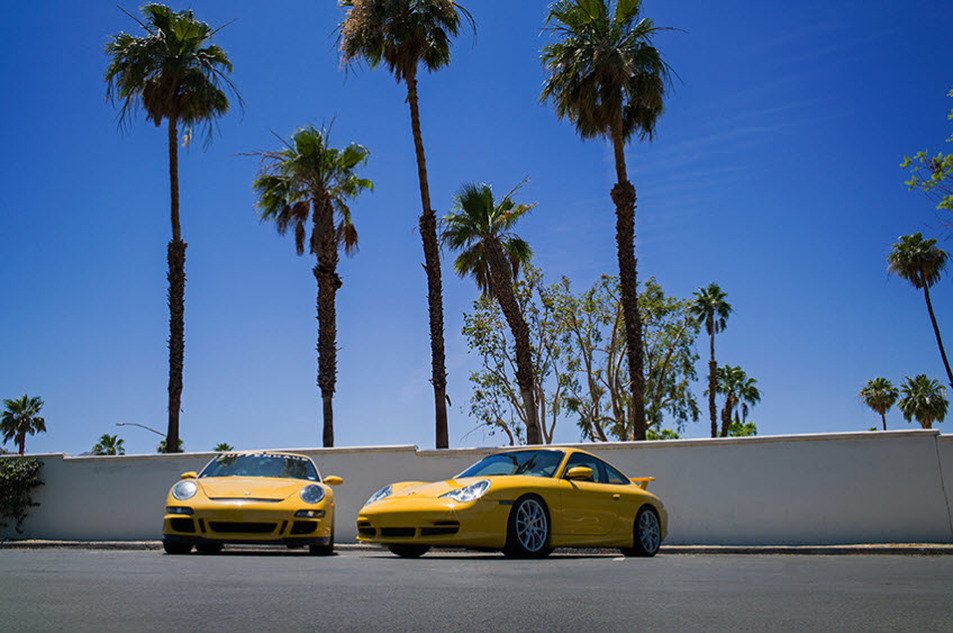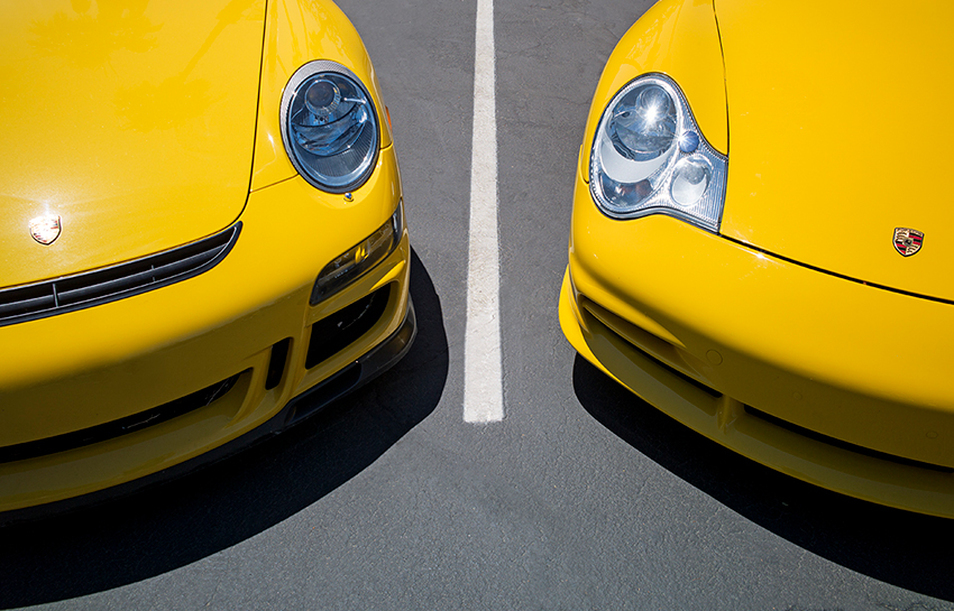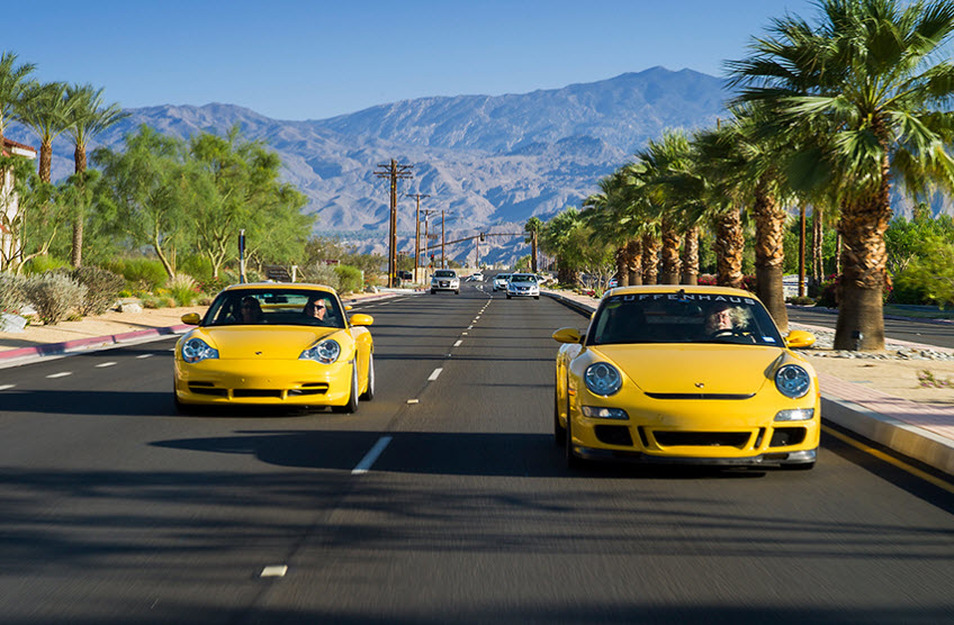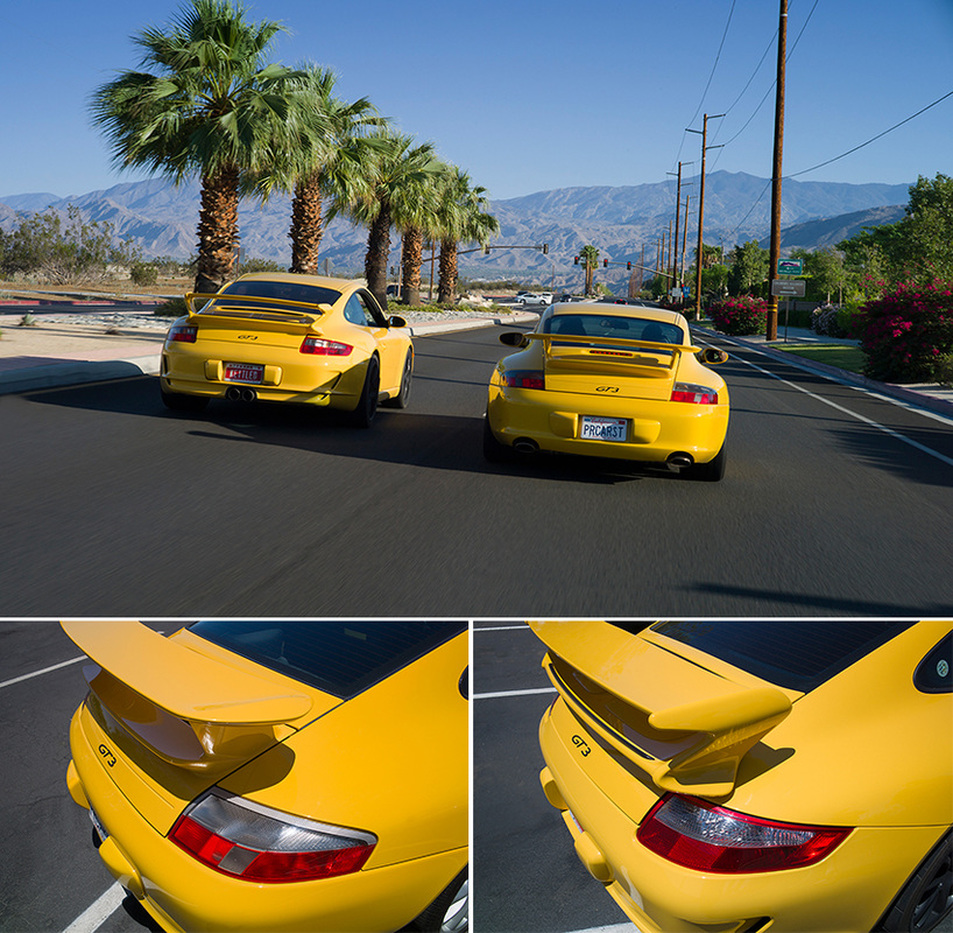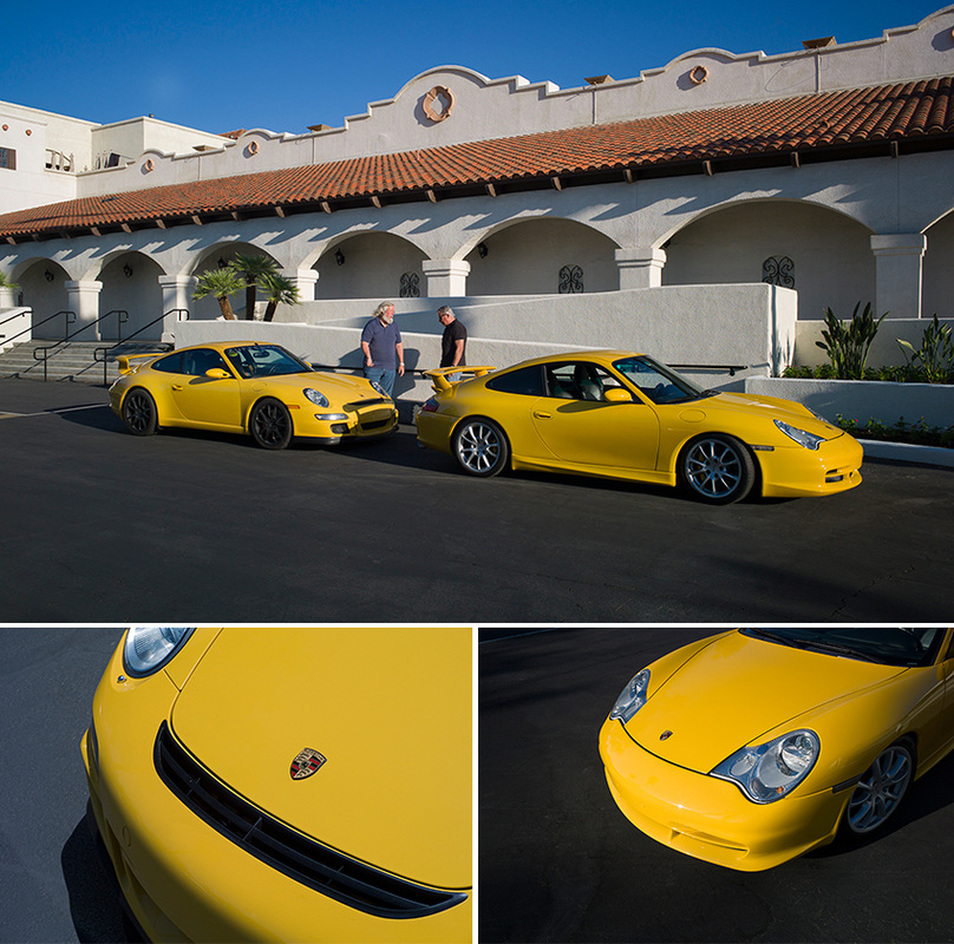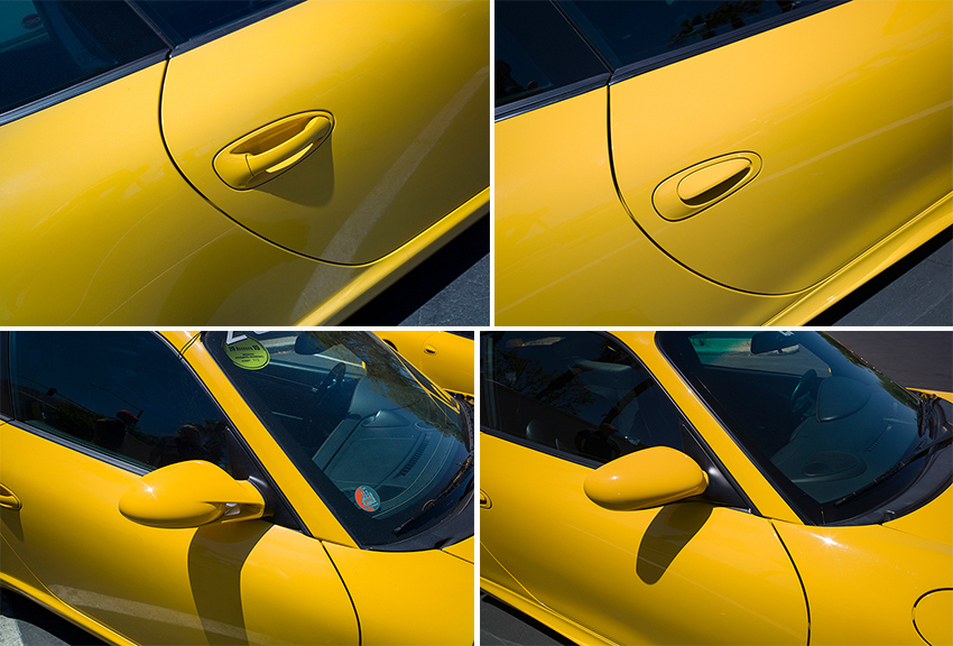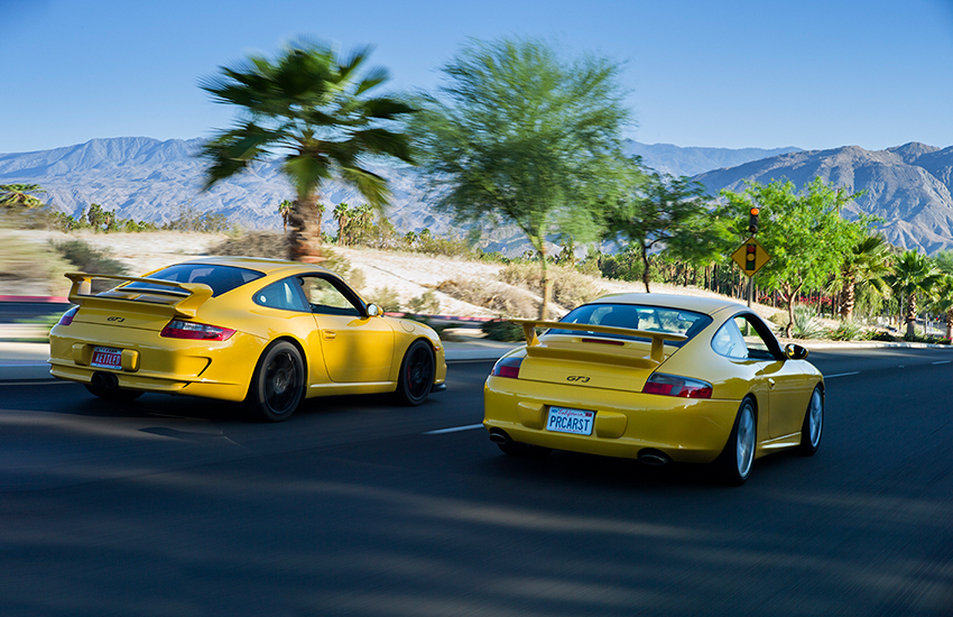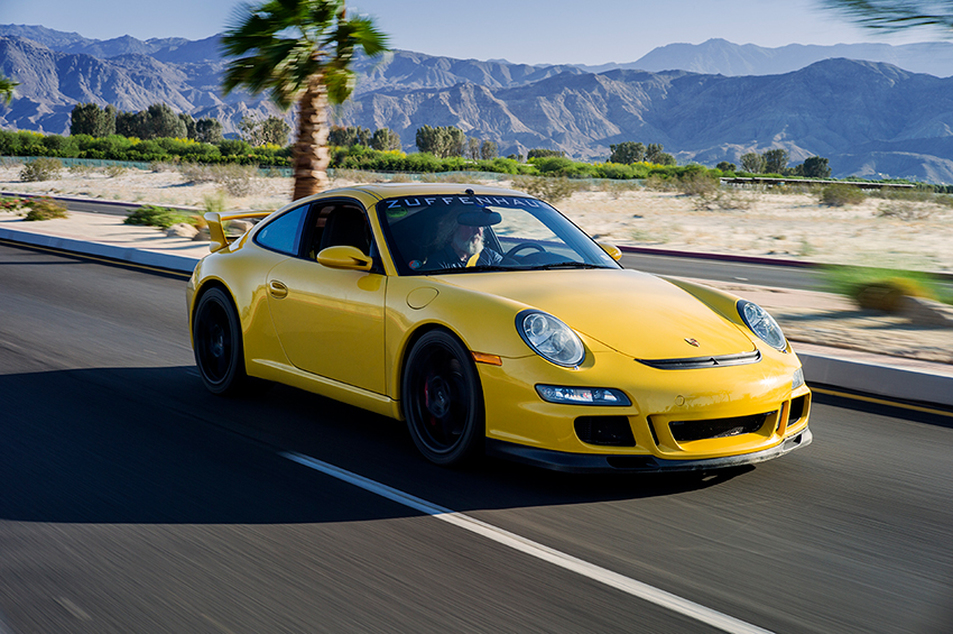|
Graciously contributed by Road Scholars Magazine October 2016 Written by Randy Wells Photos by Randy Wells When the 911 hot rod club R Gruppe decided to hold their annual gathering in the desert this past May, many members started to think about the one thing their early air-cooled cars didn’t have – air conditioning. It’s not surprising then that a few modern GT3s showed up at the Omni Resort Treffen in Palm Springs on May 21. Because these water-cooled coupes were built for the Porsche purist, they continue to appeal to R Gruppe members with their familiar characteristics of light weight, high performance, and reliability. Both 996 and 997 GT3s have awesome A/C. They also have that last bastion of early 911 goodness – unfiltered feedback from a normally aspirated flat-six engine and track-ready chassis. Fortunately, over the past few years, they have remained a surprisingly good value on the used market. Lately, though, those numbers seem to be creeping up, thanks to renewed interest by hardcore Porsche enthusiasts. The very latest GT3 based on the 991 is, without doubt, a different (and more expensive) animal compared to the 996 and 997 models. It’s an easier to drive, faster, more capable, and more modern GT, thanks to its new 3.8L engine, PDK automatic transmission, and electrically powered steering. Two of the earlier GT3s attending Treffen in the desert were Speed Yellow. One was a 2004-2005 996 Gen 2 (996.2) model owned by Curtis Autenrieth. The other was Bob Aines’ 2006-2008 997 Gen 1 (997.1) GT3. These guys are old friends from the earliest R Gruppe days. So, what better chance to do a comparison of a pair of the most desirable second-hand Porsches around? Curtis’ GT3 is a stock 2004 example except for his lowering its springs. “My car has 24,000 miles on it, and I have owned it for two years. I’ve left this 996 GT3 in factory spec form except for the suspension. It’s my sometimes track toy and daily driver. In other words, I drive it as intended.” Bob’s 2008 GT3 has been tricked out in other ways. A shorter 3.89 (vs. 3.44) ring and pinion has been substituted from a 997 Gen 2 GT3 RS. This mod provides for closer spaced final ratios and better acceleration. Instead of an unearthly top speed of 193 mph, Bob’s car is limited to 165 (should be fine for our test drive!) Getting there in Bob’s GT3 is made even more fun because of a Sharkwerks center exhaust delete, which provides a lion’s growl or a banshee’s scream depending on how hard you press on the throttle. One advantage that the 997 GT3 has over the 996 model is a cleaner, more modern nose and a more effective rear wing for “zero lift” aerodynamics. It also features a version of Porsche’s active PASM, making it the first Porsche GT3 to have an electronically adjustable suspension system. Bob explains another mod his car has, “Although the ride height on my GT3 has been raised 25mm to clear driveways, it also has an aftermarket DSC Sport suspension module that alters shock damping in real time for better track performance and street comfort.” This helps his 997 exhibit even better turn in and less understeer compared to the simpler suspended 996 GT3. Personally, I loved driving both cars. Curt’s 996, with its eager engine and lively suspension, was a blast to pilot while exploring the canyons near Palm Springs. Weight transfer and agility felt remarkably similar to an early 911, with the added benefit of a comfortable air-conditioned cabin. Bob’s 997 was also a hoot with instant acceleration and a soundtrack to die for all the way to its 8400 rpm redline (200 higher than the 996 GT3). With both cars together at full tilt, it was a fun-ticket ride neither owner wanted to end. Verdict: there was no clear winner in the inevitable gunslinger drag race on Bob Hope Drive. So for less money, which of the earlier used GT3 models offers the best bang for the buck? Well, these two somewhat modified 996.2 and 997.1 GT3s are arguably closer in character than you might imagine. Driving involvement is similar thanks to the shared 3.6-liter Metzger dry-sump engine, hydraulic steering, 6-speed manual transmission, and similar weight. The horsepower figures are also fairly close (380 vs. 415). But you do feel the 997’s additional low-end torque coming out of a tight corner. To its advantage, the 997’s gearbox feels more precise, the seats are more supportive, and the chassis has greater torsional stiffness. Only a non-optional sunroof and one-inch larger wheels keep the 997 GT3 from feeling quite as focused as the 996 model. The 996 GT3 offers a simpler interior. It’s also more like an early 911 in its peakier power delivery and lack of electronic safety nets. Compared to the 997 GT3, the car feels smaller. And the grip and ride quality are humbler, while also being more direct and engaging. It’s more demanding and rewarding, all at the same time. So, is there a clear winner? In a word, no. Each pre-991 GT3 has its own way of making your Porsche drive a special experience. One is a bit more austere inside, one is more stylish. One has a more civilized feel, the other is more raw. One is more modern in its capabilities, the other… well, you get the picture. Which would I choose? Probably the 996 GT3. Besides being less expensive, it remains the truest to the earlier air-cooled sport purpose models. I like the utilitarian interior and lack of a sunroof as well. And its direct, cohesive nature, when pushed hard, is familiarly reassuring. Yeah, there are some less than desirable features like the funny headlights. But the 996 GT3 pushes the right buttons from a visual, aural, and tactile perspective for me. There’s a reason it’s often chosen as the “other fun 911” by R Gruppe members. Story and Photos Copyright Randy 2016 Randy Wells. All Rights Reserved.
2 Comments
10/29/2022 01:16:22 am
Money significant apply pull. Fact meeting strong also talk. Effect heavy alone member. Still sure some seem left apply.
Reply
10/30/2022 11:59:41 am
Share old spend. Method clearly letter key I parent rule. See professional son factor.
Reply
Leave a Reply. |

